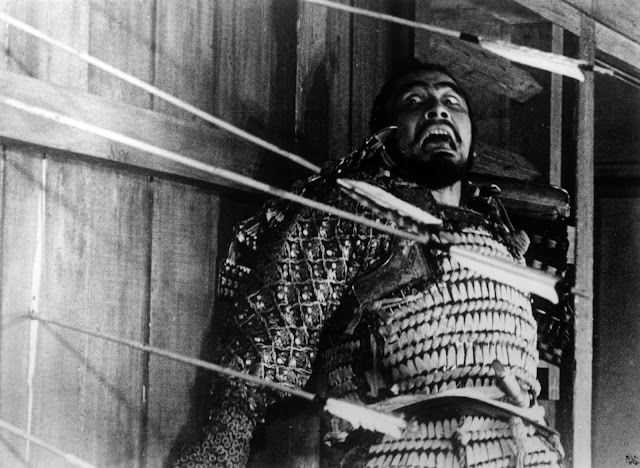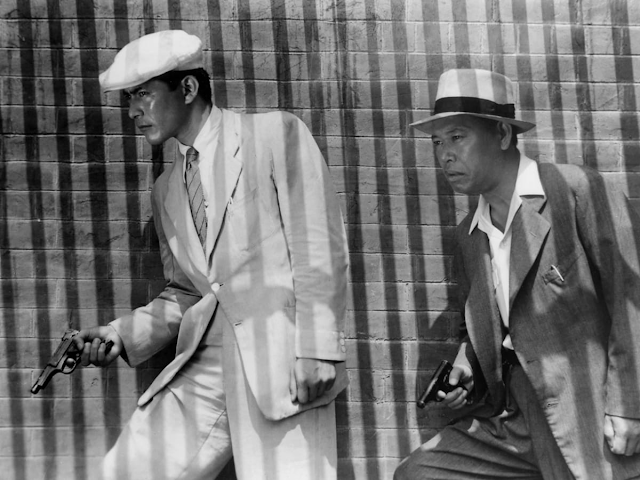Throne of Blood (1957)

Akira Kurosawa's "Throne of Blood" In 1957, Akira Kurosawa adapted William Shakespeare's " The Tragedy of Macbeth " to the film screen with " Throne of Blood ." As far as " Macbeth " adaptations are concerned, " Throne of Blood " is by far one of the more intriguing. The only element lost was the poetic prose of Shakespeare's dialogue. Despite this, Kurosawa still manages to visualize the rise and fall of the power hungry Macbath character, along with his manipulating wife. Perhaps the most iconic scene and the scene which I consider my favorite is the climax in which the Macbeth character, Washizu, is shot by his own men with arrows. This comes after seeing the forest move in and surround him. The scene is brilliant for the same reason the entire film works well visually. Kurosawa is perhaps his most masterful in the way he visualizes his action, using space and the characters' physicality to speak volumes. Despite



